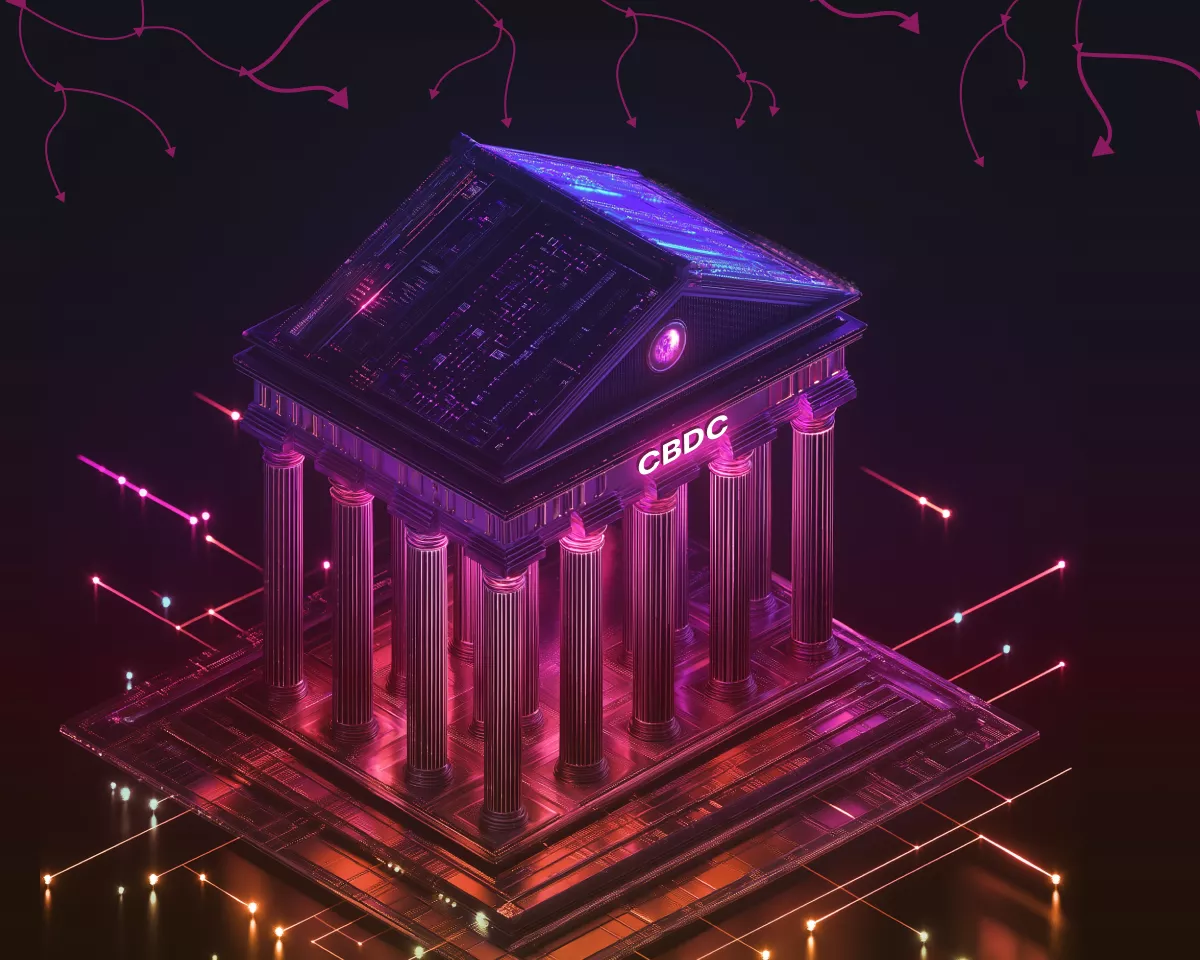
The post Hello World; I’m Findora – The Future of Blockchain Privacy appeared first on Coinpedia - Fintech & Cryptocurreny News Media| Crypto Guide
Findora is leading the privacy revolution in Web3 by creating a privacy oracle for any Layer 1 or Layer 2 chain on Ethereum.
Similar to how Polygon solves all things scaling for Ethereum, Findora solves privacy scaling for Ethereum by using an innovative blockchain architecture that no other project has tried. By providing privacy, Findora will allow individuals and institutions to enjoy the security and decentralization of Web3 with the protections of Web2.
TL;DR
- Findora is a leader in privacy blockchain technology using zero-knowledge proofs.
- Although many assume crypto is automatically private, public ledgers and public blockchains expose their financial transactions.
- Findora uses advanced cryptographic technology collected in their open-source Zei Library, which includes Bulletproofs and Turbo Plonks.
- It does more than all other zero-knowledge projects, providing not only confidential transactions but also powerful ZK toolkits, a UTXO settlement layer, and unparalleled composability.
Crypto =/= Private. People Just Assume It Does
People associate crypto with privacy and being secretive. After all, “crypto” is Greek for “hidden,” so it is suited for anonymous transactions natively already, right?
Well, no. Public blockchains like Bitcoin and Ethereum use open ledgers that publicly broadcast transactions between “wallets.” These wallets are tied to each of your transactions on the public ledger. Thus, if anyone ties your personal ID to your wallet address, they have your entire transaction history.
For example, imagine you lived in a house made totally of glass. Neighbors could see you cooking, working, using the restroom, and engaged in personal activities as they walked by. Your only protection was a mask you had to wear everywhere.
That mask is like your wallet address on a public blockchain like Ethereum. Everyone can look up all the transactions tied to that address. And if the mask slips, if that address is tied to your personal identity, you would essentially have zero privacy on-chain.
Crypto is pseudonymous at best. It poses too great a privacy risk for many businesses and communities to use. But what if there was a way to have the same benefits of a public blockchain – trustlessness and decentralization – without sacrificing privacy?
Never Fear; Privacy is Here!
Findora revolutionizes blockchain technology, integrating a UTXO ledger (as Bitcoin uses) with an EVM ledger (as Ethereum uses). By parallelizing these ledgers, Findora unites the two so developers can leverage either one, giving Findora more utility than chains that adhere to only a single blockchain model.
Findora has created an inherently different blockchain architecture that is optimized for zero-knowledge integration and cross-chain compatibility. It’s not a Layer 2 ZK project like ZK-Stark nor a token mixer like Tornado Cash. These projects are important and do good work — they are part of what we call the Privacy Alliance — but they don’t offer the native settlement capability and universal programmability that Findora can.
Even though transaction data, like a token amount, token type, and wallet addresses, can be shielded on the Findora blockchain, the data can still be audited by regulatory bodies for compliance purposes. This allows Findora to neatly fit the existing needs of the financial sector so institutions and businesses can move their capital to Web3.
Because of its EVM ledger and Tendermint consensus engine, Findora is compatible with most of the cryptoverse and is a cross-chain-friendly project. This allows other projects to use Findora like a privacy oracle as their own privacy layer.
What is A Zero-Knowledge Proof?
Zero-knowledge proofs are mathematical algorithms that allow one party (the prover) to prove to another party (the verifier) that they know a value x, without conveying any information about the details of the proof. For example, it would be a way for one person to prove they know a secret password without revealing what that password is. The classic example is the cave of Ali Baba, but we have one that is a bit more relatable.
Imagine you’re back in middle school, and your friend Susie claims to have the number of the girl you like. But you don’t really believe she has it. You want your crush’s number so you can ask her to the movie, but Susie won’t give it out. How can she prove she has it without giving it to you? This is where a zero-knowledge proof would come in handy so that Susie could prove she has the number without revealing what it is.
Susie reveals 2 digits of the 10-digit phone number (these act as the keys in a real ZKP). You don’t believe that’s really her number, of course, so Susie calls it, and your crush answers! You know it’s her because is the same voice, laugh, and personality.
Susie hasn’t given you your crush’s number, but she did prove to you that she had the number by verifying the voice and a few digits to you.
In this analogy, Susie revealing two digits and calling your crush is an example of a zero-knowledge proof. ZKPs are the exchange of two keys, one private and one shared, that, when hashed, solve a specific problem. When solved, it proves to any observer that both parties have the answer without revealing what the answer is.
Findora’s Cryptographic Techniques
All of Findora’s ZK cryptography is stored on the Zei Library, the most advanced collection of ZK implementations in Web3. You can find it and other open-source documentation on the Findora GitHub. Here are a few key ZK proofs and concepts to know:
ZK SNARK: The most commonly used ZKP, a ZK-SNARK (“succinct non-interactive argument of knowledge”) is a proof that requires two keys, one public and one private. The private key is used to generate the proof, while the public key is used to verify the proof. Bulletproofs and Turbo Plonks are specific types of SNARKs.
Bulletproofs: Bulletproofs are “zero-knowledge proofs that require no interactivity and have very short proof and verification sizes.” They were created in part by Findora researchers at Stanford in 2018. Findora uses them to make Blind Asset Records (BARs) which, practically speaking, can shield the amount and token type involved in a transaction.
Turbo Plonks: A system of polynomial commitments with sublinear-sized SNARKs, Turbo Plonks were created by Ethereum researcher Tim Ruffing in 2018. Findora uses Turbo Plonks for “Triple Masking,” which allows wallet addresses involved in a transaction to remain anonymous. They convert a BAR into an ABAR or an “anonymous blind asset record.”
ZK STARK:(not used by Findora yet but important to know): ZK STARKs (“scalable transparent arguments of knowledge”) are “zero-knowledge proofs that do not require a trusted setup, are post-quantum secure and have very short proof sizes.” They were created by Eli Ben-Sasson, Madars Virza, and Alessandro Chiesa in 2017.
Zero-knowledge proofs are a relatively new area of cryptography, and the team at Findora is always looking for ways to improve upon them. If you’re a cryptography researcher or developer and are interested in working on ZKPs, or a developer or a Rust Engineer, please reach out. We are hiring and looking for interactions on our Discord.
What Makes Findora Different From Other ZK Projects
As mentioned before, Findora is not a Layer 2 project, it is its own separate blockchain. However, it was built to be cross-chain compatible, focusing on Ethereum-compatible chains first but will also be interoperable with Tron, Solana, and others in the future. Unlike other zero-knowledge projects, Findora is focused on more than just confidential transactions but also wants to act as a universal privacy oracle that can settle transactions.
Unlike projects like Zk-Sync and Starknet, Findora is not a Layer 2 or a scaling solution. Unlike projects like ZK Panther, it can provide other projects with native privacy and allow them to issue privacy-preserving tokens using our UTXO layer as a secret bridge across all Layer 1 networks. Unlike privacy coins or token mixers, Findora is extremely composable and capable of transacting complex smart contracts in a confidential manner.
Findora is working to make DeFi private enough for mass adoption – safe for personal and institutional use.
Findora’s History
Findora can claim major contributions to the field of zero-knowledge cryptography since it started in 2017. Here’s a brief timeline of the project’s history:
2017 – Findora researchers at Stanford University contributed to the development of Bulletproofs
2017-2020 – Findora researchers and engineers aggregated their findings into Zei Library, an open-source repository of the most advanced zero-knowledge cryptography in the industry.
2020-2022 – Findora helps develop Turbo-Plonks, a lightweight zero-knowledge proof used for scaling, and takes it from an academic exercise to having practical applications.
2021, March – Findora beta mainnet launches
2021, July – Testnet staking goes live
2021, September – Findora adds EVM extension and Ethereum compatibility through its own “smart chain.”
2021, October – beta mainnet staking launches
2021, October – Findora’s $100 million Ecosystem Fund goes live to incubate projects and offer grants
2022 – Triple Masking, which provides for fully anonymous transfers to go live.
A Private Future Made Public
DeFi and Ethereum have worked so hard to create a decentralized future that they forgot that privacy is a financial primitive. It’s not some cloak for criminals. It’s a necessary part of society, enabling business, free speech, free association, innovation, true sovereignty, and growth. Many institutions are forced to park their funds on the sidelines of DeFi because transacting on public blockchains would reveal proprietary trading strategies.
Findora can be used for a slew of necessary use cases: private DAO payrolls and voting, private insurance payment, private NFTs, and much much more.
Findora scales Ethereum privacy with next-generation zero-knowledge proof technology. It is a leading privacy-preserving smart contract platform for Web3, giving developers the tools they need to build a new financial internet. It is poised to use privacy to make DeFi a safe place for individuals and financial institutions and accelerate the mass adoption of crypto around the world.
Whatever the future for Web3, it’s clear that privacy, and Findora, will be a big part of it.
Disclaimer: This is a guest post. Coinpedia does not endorse or is responsible for any content, accuracy, quality, advertising, products, or other materials on this page. Readers should do their own research before taking any actions related to the company.

 3 years ago
173
3 years ago
173














 English (US) ·
English (US) ·